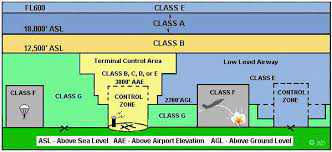An Update on ADS-B in Canada for the Rest of Us!
Ian Brown, EAA 657159, Editor, Bits and Pieces

March 2023 – If you have time to read it, this link will get you to a full update on ADS-B Out requirements for Canada. If, like many, you don’t have the time to sort through a lot of irrelevant stuff I’ll give you the Coles Notes version.
If you’re a private pilot never flying above 29,000 feet, the main concern for the next few years is flying through the airspace above 12,500 feet of larger airports. If you never do that, you can relax for three or more years.
- When you install ADS-B Out you can have it “out only (B1)” or with “in (B2)” receiver capabilities. Both must be on 1090 MHz.
- Your antenna must point skywards, with or without a second antenna pointing down. NOTE: Your editor has been flying for several years with a uAvionix Tailbeacon that includes both antennas and mounts in place of your rudder tail light. At least in U.S. airspace it has worked well and replaces your transponder.
- ADS-B will become a requirement for Class A airspace in August of this year (2023).
- ADS-B becomes necessary for passing through Class B airspace commencing May 16, 2024.
- There are no Class B airports in Canada.
- Class C, D and E airspace no earlier than 2026. Hence the comment about three or more years.
There was an interesting comment at the end of the document. “In advance of the effective dates of the mandate, NAV CANADA will continue to expand the areas and altitudes where ADS-B surveillance services are available, so that aircraft operators who have equipped early will be able to take greater advantage of these safety and efficiency benefits.” So, it looks as though those of us who do equip early will be able to benefit, although the statement doesn’t make clear what services will be available in our commonly used airspace, or when.
